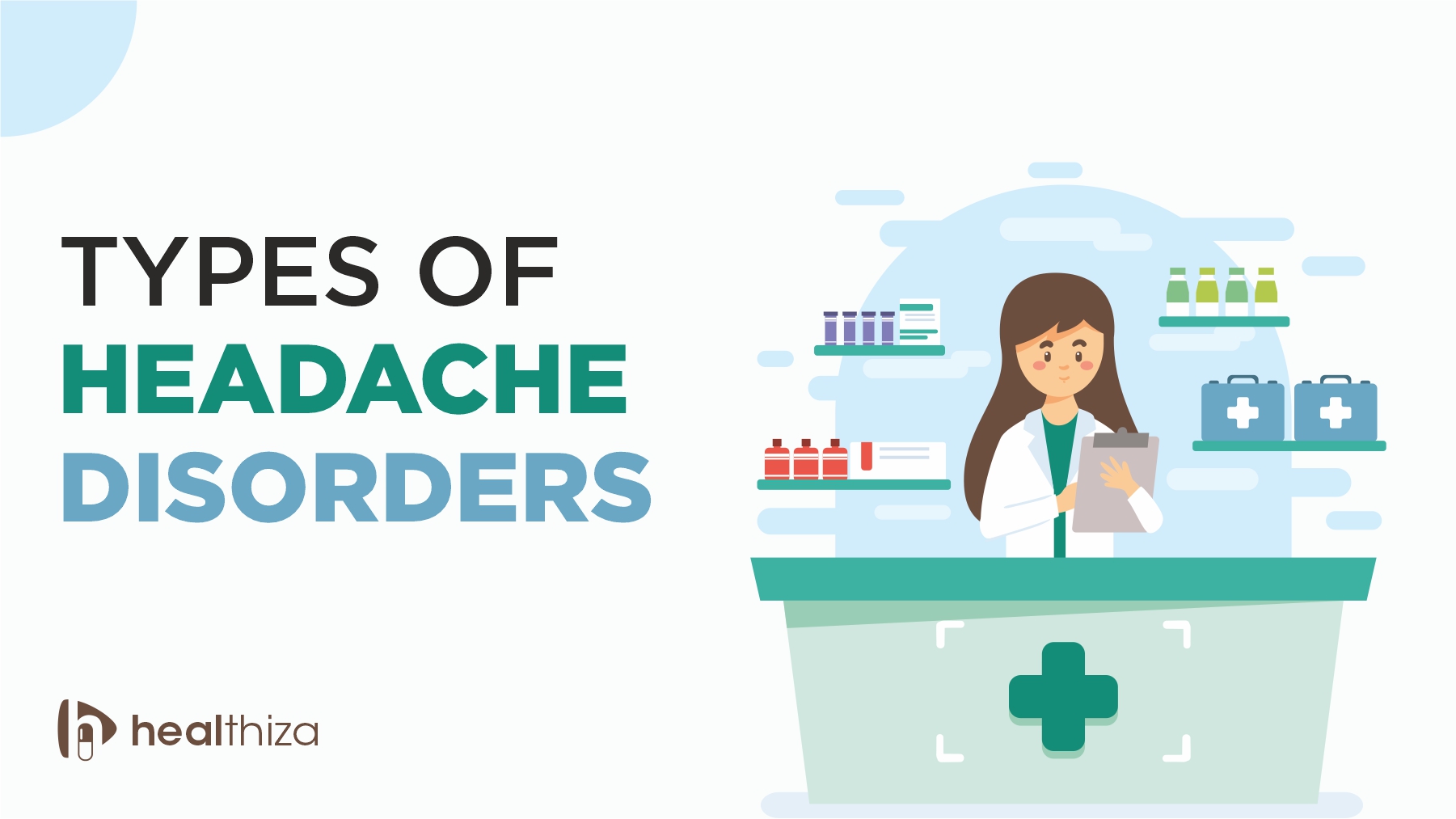Types of Headache Disorder
Common Causes of Headache Disorder
Headache disorder is common among people nowadays. According to experts, between 50 and 75 percent of adults experienced headaches this year. Most headaches are brief and moderate, but some can be incapacitating and interfere with your everyday activities.
There are numerous types of headaches, and they can be brought on by a number of things, including our environment, the medications we take, and other things. To help manage the discomfort, a variety of therapy alternatives are available. We will talk about several headache types in this article.
Tension-type Headache Disorder (TTHD)
The most prevalent primary headache problem is tension-type headache (TTHD). The quality of life for persons affected by TTHD could be considerably impacted. The discomfort from this headache might spread to both sides, the front, and the back of the skull. So you might get discomfort across your entire brain. Due to the fact that TTHD headache disorder are often mild to moderate, are not made worse by normal physical activity, and do not result in disability, people who experience TTHD may simply choose to ignore them.
Cluster Headache
Less than 1% of people experience cluster headaches, making them uncommon. Throughout the day, this headache regularly occurs. The symptoms are transient but could be quite serious. Tears and redness frequently result from the pain becoming concentrated around one eye. On the same side of your face, the nose may also run or enlarge, and the eyelid may stoop.
Over-Medication Headache
Medication overuse headaches can be brought on by prolonged and excessive medication use to manage headaches. This problem is regarded as a secondary headache issue. Rebound headache and drug withdrawal headache are other names for OMH.
OMH frequently coexists with recurrent tension headaches or migraine attacks. Taking painkillers at least ten days a month for a period of three months or more is one of the characteristics of OMH. Since the medication patients take to manage their migraine headaches causes more migraines, a 2022 review identified OMH as a contributing factor in those who have incapacity due to chronic migraine.
Daily Persistent Headache (DPH)
A suddenly beginning headache that doesn’t go away within 24 hours and recurs practically every day is known as a new daily persistent headache disorder (DPH). The quality of your life may be impacted, despite the fact that this type of headache is less frequent than certain other headache types. DPH is only thought to affect 0.03 to 0.1 percent of the population, but it causes persistent discomfort for no apparent reason. It frequently appears in those who have never experienced a serious headache before.
Exercise Headache
When you engage in physically demanding activities or exercise, you may have a main headache disorder or exercise headache. A review found that people with an exercise headache have pulsating pain in both areas of their heads. The pain may be pulsing, but there is often no nausea or vomiting.
Hemicrania Continua
A chronic headache known as hemicrania continua always affects one side of the head and face. This headache is incapacitating because, in addition to the already present chronic pain, those with the illness may also endure brief bouts of intense agony.
The requirements for this headache are as follows:
- Have a mild daily or ongoing headache that is one-sided.
- Continue to have a searing, fleeting headache
- More than three months with no pain-free intervals or side-to-side movement
- Respond to therapy with the drug indomethacin
Pregnancy Headaches
Pregnancy frequently results in headaches. 10 to 17 percent of pregnant women get primary headaches or migraines, according to a 2022 assessment of studies. You could encounter stress and major hormonal changes that cause headaches when pregnant. Some drugs may be dangerous to the mother or developing fetus. It would be advised to use medication-free treatments, such as an ice pack, or pregnancy-safe drugs. For instance, the doctor might advise complementary therapies rather than prescription drugs to treat your problems.
Migraine Headache Disorder
The major headache disorder known as migraine is recurring and frequently lifelong. The pain typically just affects one part of the head and is severe and throbbing. You need effective treatment to overcome this. Sometimes OTC medicines are also beneficial to treat migraine attacks.
These are some more signs of a migraine headache:
- Nausea
- Vomiting
- Sensitivity to light
- Sound sensation
When compared to men, women experience this sort of headache disorder 2 to 1 more frequently, which may be explained by female hormones. According to a review of studies, females’ susceptibility to migraine may be affected by changes in hormone levels, such as those seen in:
- The monthly cycle
- Conception
- Oral contraceptives
- Menopause
- Patients undergoing hormone replacement therapy
Although a number of factors may contribute to migraine headaches, scientists also think that alterations in the brain’s chemical and nerve activity may also be responsible.
When to Visit A Doctor
It could be necessary to consult a doctor if you get headache symptoms three or more times each month. If the headaches affect your quality of life or lead to further issues like stress, sadness, or other worries, you might also want to think about getting preventative treatment.
Additionally, if you are experiencing frequent headaches or a different kind of headache, you should consult your doctor.


